The Lord of the Rings: The Battle for Middle-earth
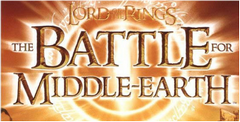
| a game by | Electronic Arts |
| Genre: | Strategy/War |
| Platform: | PC (2004) |
| Editor Rating: | 8/10, based on 2 reviews, 7 reviews are shown |
| User Rating: | 7.3/10 - 93 votes |
| Rate this game: | |
| See also: | Best RTS Games, The Lord of the Rings Games, Games Like Company of Heroes |
It’s hard to watch the Lord Of The Rings films without thinking of them in terms of a game. Littered with heroes, quests, battles, hacking and slashing, the scope is vast, and has, of course, already been liberally exploited. But a real-time strategy game? Of course. Who hasn’t watched the epic battle at the end of The Two Towers without wanting to click on a few orcs and send them to a bloody death? Around this time next year, that dream will become a reality, as EA unleashes another LOTR game on what they hope will remain a Tolkien-crazed public.
The more you think about it, the more obvious a genre the RTS is, with the LOTR universe boasting an array of different units and a slew of readymade scenarios, such as the battles at Helm's Deep, Ithilien, and Minas Tirith, for instance. It's actually something of a surprise that no-one thought of it earlier, although Vivendi is working on a similar concept based on the original books. To EA’s advantage is its exclusive agreement with New Line Cinema, affording the developers invaluable access to the movie assets. This includes the exclusive voice over services of the real actors, as well as actual footage from the three films, ramming home the game’s official status.
In the hectic world of RTS games, one name stands head and shoulders above the rest, resonating down the years on the success of a flurry of quality titles. We are, of course, talking about Westwood Studios, the official originators of the genre and developers of the long-running Command & Conquer series. However, Westwood is no more, the Las Vegasbased outfit now sadly closed, much to the chagrin of many a press trip veteran.
Gambler’s Paradox
Thankfully, some of the talent was salvaged and taken under EA’s expansive wing (the rest presumably now eking out a living in the casinos and strip joints). As well as their vast experience with the genre, the Westwood boys have also brought their C&C: Generals engine to the party, and it is a modified version of this that will provide the basis for The Battle For Middle-Earth.
Executive producer Mark Skaggs is understandably excited: "Remember the first time you got exposed to the fiction of The Lord Of The Rings? Whether through the books or the films, remember how exciting that was? The sense that you were there, the wondering what was going to happen next as you turned to the next chapter. Let’s break that down a bit and think what is so exciting about it. You’ve got a great story obviously, classic good versus evil, the fate of the world hanging in the balance. You’ve got your heroes, the fellowship, you’ve got epic battles, the landscape, the fortresses and the armies. And finally, you’ve got the lush living environment, a pervading sense of majesty and magic. Imagine if you could immerse yourself in this world, if you could get in there and actually play a part, command the battles. What would you do differently, if you were there?"
It’s In The Game
It’s a good question, but not one that is readily answerable without knowing exactly what tools you’ll have at your disposal. From what we’ve seen, suffice to say that if it’s in the films, it’s in the game. Understandably, much of the action is derived from the second film, featuring as it does the epic closing battle. The game will also draw heavily from the forthcoming The Return Of The King, which is already being touted as featuring the most spectacular battle scene ever filmed, namely the attack on Minas Tirith, which will also play a big part in Battle For Middle-Earth. As Skaggs says, "Our goal with this game is to create some of the best fantasy battles ever seen in a game. You get to control the films. The sense of being able to control the battles and doing it for the first time is going to make a lot of, not only fans of the fiction, but game players very excited. You’re going to see for the first time ever a skirmish between trolls and Ents. How thrilling is that?"
Very thrilling indeed, judging by the demonstration to which we were privy. Despite only being in development since March of this year, much of the combat seems to be in place, and we witnessed an almighty ruck between a firm of trolls and some of the Ents' top boys - the Ents, of course, being those ludicrous walking trees from the second film. In a merciless onslaught, the trolls actually uprooted static trees and used them to club their mobile counterparts about the trunk and branches. Hoisted by their own petard, the Ents retaliated by grabbing handfuls of rocks and hurling them at their troll aggressors. When they ran out of rocks, chunks of masonry were dislodged from nearby buildings and used as impromptu missiles, as were a couple of passing orcs.
It’s this use of the immediate surroundings that the developers are keen to stress. According to design director Dustin Browder: "We want to make sure that the environment physics is really something you can make use of, that you can really do some damage with it if you’re savvy with how to use it."
The Lord Of The Rings is, of course all about large-scale battles, and this will be reflected in the game. AV They might not quite beable to get 10,000 orcs on the screen at once, but they’re certainly not shirking on the numbers. In various demos, we witnessed 500,650 and finally 733 units on screen, the latterexample maintaining a frame rate around the 40 per second mark.
There’s a lot of 'level of detail’ tweaking to be done to incorporate the various camera angles, for instance, but the hope is that this kind of number of units will smoothly make it into the final game.
Big-Bang Theory
Technical issues aside though, simply controlling such a large number of units would appear to be an impossibly unwieldy proposition, something of which Browder is fully aware. As he says, "How do you control this kind of battle? One of the things we’re talking about doing is not controlling a good many of your troops any more as individuals. So the heroes (see boxout) we control as individuals, and certain elite forces, like the Uruk-hai berzerkers - those crazy half-naked guys with the warpaint all over them - they’ll be controlled as individuals. But otherwise we’re talking about controlling units as battalions. When you order in these troops, like your orcs and your soldiers, they’ll tend to form up these battle lines, and you’ll kind of see how things are going by whether or not your part of the battle line is shrinking or growing. And then you’ll have these reserve troops, like archers and trolls, with which to interfere in this major battle.
"So I’m not going to go in there and try to control all these little guys; that would be insane. We will definitely get the Al to the point where they’ll be able to run around and manage themselves successfully in one-on-one combat." All of the major races should be available, replete with their particular skills and attributes.
Animal Magic
Animals will also feature heavily, and Browder says, "We've had games before with birds in them, people have done games with sheep in them. Having animals in the world makes it really feel like it’s alive. We want to make that stuff really matter and make the world part of the experience."
For instance, the huge Oliphaunts will effectively be used as transporters, enabling you to load them up with troops and take them across the battlefield. And if you chuck a few archers in there, they should be able to use the extra height to their advantage and pick off a few foes en route. Other wildlife includes the Wargs, those wolf-type orccarriers that crop up halfway . through The Two Towers, as k well as the Rohan Horseman and Gondor Knights. The game will also support as many aerial units as the fiction allows, including, of course, the Fell-beasts, those great big flying dragons.
Entrapment
Siege warfare figures large in the Lord Of The Rings universe, and will also make up a large part of The Battle For Middle-Earth. Attacking buildings will involve going at them with catapults and battering rams, as well as attempting to scale the walls, although the inhabitants will naturally fight back with a variety of weapons and traps.
"You really want to make your castle a deathtrap," Browder explains. "You want to make it this fortress that’s just doom for your enemies to assault. To even consider entering is suicide for them, so we want to have all kinds of different traps with burning oil and maybe pit traps as you’re moving to the base. Say I’m playing as Minas Tirith, I might set up some walls inside my castle, I might have a gate here and a little courtyard around the gate and then I’ve got a door. That door's open, sort of inviting: 'Maybe you’d like to come into my little courtyard, work your way through my base, see what happens.’
"Then in my towers I’ve got archers hidden, on the walls I’ve got boiling oil ready to go, I’ve got a couple of pit traps in the courtyard ready to go, and the orcs come in and I go 'Screw you!’ and I close the gate behind them and I dump the oil and open the pit traps and the archers start shooting and everybody dies in ten seconds or less." Despite that example, the game will generally offer a slower pace than the tank-based action of Red Alert 2 or Generals, enabling more high-level strategic decisions. There will also be some resource management, with wood required to spawn Uruk-hai, for instance, and also liberal use of magic, including the ability to change the weather in order to hamper the enemy.
Multiplayer is also receiving a great deal of attention, and the plan is to steer away from pseudo-Deathmatch maps and develop a more story-led campaign in keeping with the fiction.
Here Next Year
With plenty of development time left, this is one game that we’ll certainly be keeping a close eye on, despite being slated for release almost a year after the final movie. That's not something that concerns Browder though, who bullishly claims, "We’re making a great RTS game. That’s the goal. We want to make the best RTS game we can and Lord Of The Rings has been a classic for quite a long time. So I'm not too worried about Lord Of The Rings becoming passe." With a game this big, that certainly seems unlikely.
Download The Lord of the Rings: The Battle for Middle-earth

System requirements:
- PC compatible
- Operating systems: Windows 10/Windows 8/Windows 7/2000/Vista/WinXP
Game Reviews
It's finally happened. After a decade of dominance, then diminishment, the tried, tested and tired ethos of real-time strategy development born from the Command & Conquer phenomenon is coming to an end. LOTR: The Battle For Middle-Earth is a bold step away from the predictable mainstream RTS formula that has been prevalent in so many games of this genre for far too long, melding the best of the mainstream and hardcore markets in one exquisite, shiny package.
Based on all three films from Peter Jackson's titanic trilogy, this is a work of supreme detail and quality, shoehorning many of the celluloid adventures' best merits and moments into two campaigns (Good and Evil) of equal excellence, tension and entertainment. As you'd expect from a high-budget game based on one of the most accomplished trilogies ever created, TBFME simply brims with references and content from the films. From the voiceovers (well, most of them anyway) and storylines to the map of Middle-earth and the replication of each character and unit, it's authentic enough to satisfy Tolkien fans, yet rarely " overwhelming to a Lord Of The Rings newcomer.
From the very first time the sprawling map of Middle-earth unfurls on your monitor, you're left in no doubt about the game's quality. The boxy, clunky interface of RTS games of old has been replaced by a beautifully streamlined and intuitive control system that disposes with the tedium of manually upgrading buildings and the necessity to construct just one unit at a time. Every command is now just two or three mouse clicks away, while troops now spawn in squads. Meaning? Well for starters, raising an army takes a fraction of the time than in many other RTS games, giving you more time to concentrate on combat and conquering your opponent. And that's got to be a good thing, right?
Good Vs Evil
While the two campaigns are fairly unique in terms of storyline, both feature the same three mission categories. The simplest of these are the Fellowship missions, which task you with either leading the Ring Bearer (Frodo) and his protectors safely through dangerous territories such as the Mines of Moria, or (if you're playing the Evil campaign), thwarting the Fellowship's progress. These are quick-fire missions that are usually over within 15-20 minutes, more action-based than strategic and usually bereft of any type of resource management.
Defensive and offensive siege missions require you to either fortify your defences before repelling an enemy assault, or mass your forces and storm an enemy stronghold. The defensive levels are without question the most emotionally enthralling sections of TBFME, with your outnumbered forces struggling against seemingly insurmountable odds. Things reach a feverish climax of adrenal gland-drying carnage towards the game's latter stages, when you get to relive the visually spectacular battles of Helm's Deep and Minas Tirith.
During the few precious moments you're given before the enemy swarm upon you, you must frantically line your walls with archers, identify the different tiers of each fortress (so you can fall back and regroup when things are looking bleak) and plug any holes in your defences.
Suddenly, the uneasy calm is broken by war horns, heralding the arrival of the enemy and the commencement of hostilities. Men quiver in fear as the enemy approaches, just one example of the many emotions depicted by the game's intuitive Emotion engine. Your ears pound with rushing blood, bellowed war cries and finally, the clashing of steel as baying orcs and Uruk-Hai scale the walls with siege ladders and pound at your buckling gates with fearsome battering rams. And save for a few clumsy moments (especially if you're attacking) when your troops won't do as you tell them to, there's very little to find fault with in these encounters.
Three S Company
The third mission type - basebuilding and conquering - is also the most common. It'll be instantly familiar if you're an RTS fan, tasking you to build bases and expand your holdings on the map to try to strangle your opponent's resource gathering capabilities and ultimately eliminate every enemy unit and building from the level.
These maps are dotted with designated base-spawning areas, some of which enable you (or the enemy) to build mighty fortresses that you can pack with an array of buildings, while others act as smaller outposts with only three spaces on which to erect new structures.
With the location of your bases out of your hands, you're literally forced to explore each level and track down new building sites, then defend them against enemy onslaughts, a feature which really bolsters the game's strategic depth.
Once you've built a base, you can start producing units and upgrades, such as improved swords, armour and shields. The more units or items a building produces, the more experience it gains. Once you've used a building enough, it automatically upgrades to the next level, unlocking new units and power-ups for you to explore and construct. It's a beautifully simple interface, and with little micro-management clogging up your time and attention, there's plenty more scope for concentrating on the action-haemorrhaging battles.
The Bitching Hour
But first, a complaint. There's one very major fault with some of TBFME's base-building missions, something that's blighted these types of games for a decade and that sadly hasn't been fully rectified here. With resource gathering still playing a major role in proceedings (farms and blacksmiths for the Good side, lumber yards, furnaces and slaughterhouses for the Evil side), these levels can at times deteriorate into wars of attrition, with neither side being able to seize the initiative. Either that, or they're just too damn easy. When the former happens, missions can become ultrafrustrating and repetitive, with enemy attacks concentrated on the same few locations with exactly the same types of unit. By the time you do finally manage to prevail, you're just relieved that the mission is over, rather than feeling any sense of satisfaction. What's more, in these situations, you rarely (if ever) feel as though you're being out-thought by the Al, which seems to prefer relying on brute strength rather than guile. Oh, and while I'm pointing out negatives, sometimes the Al units can stand around and watch you destroy their base without reacting - though admittedly, this is a rarity.
On to the battles, which prove to be the game's most drastic step away from Command & Conquer conventions. Whereas C&C: Generals tried to add a modicum of strategy to its 3D skirmishes, TBFME contains a far sharper tactical edge. For starters, mastering combined arms and height advantage, as well as utilising each unit type's strengths, weaknesses and formations (which you can combine with those of other units to gain an extra advantage) are now essential skills for you.
Cavalry are excellent against infantry and archers, their charges sending stationary foot soldiers carving through the air and thudding violently onto the floor. But try charging headfirst into a well-organised group of pikemen, and you'll find horse kebab on special at most local taverns before the day's out.
Archers are nippy and great at range, but virtually useless up close, while infantry can wipe out a group of pikemen without suffering many losses. Believe me, just throwing all your men into battle and hoping they beat the Al won't get you very far here. The sheer scope of some of the battles is immense, with scores or even hundreds of troops clashing at once. In fact, with the exception of Rome: Total War, there are few other RTS games which come even close to achieving the sheer brutality and believability of virtual warfare as TBFME, though some of the sieges, such as Helm's Deep, could have done with being a little larger in scale. What's more, with each level also featuring at least one of your favourite heroes from the films to lead your troops into battle (see I Can Be Your Hero, Baby',), you've got a formula for some of the most captivating battle scenes ever found in an RTS.
Good, Bad & Ugly
And what of the units, which have been lovingly recreated from the films? Watching a sea of charging cavalry is an awesome sight, their hooves kicking up dust and rumbling like thunder as they gallop at the enemy before hitting them like a tidal wave. Uruk-Hai pikemen march with spears, roaring gutturally and lowering their giant toothpicks at an angle to impale advancing foes, while their crossbow-toting counterparts can upgrade their projectiles with fire. Cave trolls lumber around dumbly, picking up felled tree trunks and scattering their opponents with fierce swipes, while Balrogs are immense beasts of fire and shadow that can take to the air and call upon an array of arcane powers.
And let's not forget the graceful multi-talented elves who can become invisible in woods and fire their projectiles devastatingly far, or the gigantic Oliphonts (giant elephants) with their spike-covered tusks. Best of all though are the Ents. Slow and cumbersome but powerful, these walking trees can kill dozens of enemies with one giant kick or slap, and should they come into contact with fire, run manically with arms flailing to the nearest water source to douse themselves.
The Battle For Middle-Earth is simply spilling over with attention to detail, making it one of the most charming and charismatic strategy games ever created. Zoom into the breathtaking visuals and you'll find Uruks being pulled out of Uruk Pits in muddy jackets, cows being herded into slaughterhouses and coming out the other side as giant slabs of meat and farmers tilling the land on farms. The presentation is almost above reproach (though sometimes units can act somewhat erratically), and coupled with the spine-tingling soundtrack lifted straight from the films, the whole package becomes a mesmensing ride of highs, lows and numerous thrills, with the odd frustration thrown in for good (or should that be bad) measure.
A New Dawn
Without question, The Battle For Middle-Earth is a triumph, a game which not only manages to unite the mainstream and hardcore markets, but one which sets new standards in presentation and polish. Despite its innovations, it's accessible enough for casual gamers to master in minutes, yet it still manages to cram in just about enough strategic depth to seduce you if you're a hardcore strategist. Sure, sometimes it can get a tad repetitive, sometimes levels can be a bit of a slog (or sometimes a little too easy for RTS veterans), but mainly, this is a thrilling, beautifully-imagined piece of programming that does the films proud.
Even if you're not a fan of the trilogy, you shouldn't hesitate in checking this out, though you'll undoubtedly get more out of it if you watch the films first. And while it may not be quite up to Rome: Total War standards (which RTS is at the moment?), it's still a shining light within the genre that simply shouldn't be missed.
One Ring And Even A Star
Call Upon Great Powers To Aid You
Apart from units, heroes, buildings, storyline, missions and resources, what else is different between playing as either Good and Evil? Funny you should ask, because both sides possess two equally powerful, though very different super weapons, which gain in power as each campaign progresses. The foul forces of Isengard and Mordor can call upon the Power of the One Ring, which among a host of other dark powers, enables you to mat the earth with vines that entwine around enemy troops to slow their progress, and summon Balrogs.
To counter the Ring, the armies of Rohan, Gondor and The Fellowship have access to the Evenstar, which enables you to heal your men and summon huge, near-invincible armies of Oathbreakers (undead warriors) to bolster your forces.
We've said it before, but The Battle For Middle-earth is something of a dream ticket for real-time strategy fans. The design talent of team Westwood, the mega-budgets of EA, the production values of a Hollywood studio and the licence to the most spectacular cinematic trilogy since Police Academy 4 through to 6.
Up till now, the only possible objection has arisen from the looming shadow of an even greater strategy presence, the toga-clad bulk of Rome: Total War (that, and the non-involvement of Steve Guttenberg). But forget all that. The comparisons are now utterly redundant, as what we saw at E3 has proven that EA is taking a very different direction with its trilogy-spanning title.
Where Activision's Rome is aiming for maximum scale, TBFME is aiming for maximum emotion, with an emphasis on fleshing out the little details that change a battlefield simulation into a true cinematic spectacle.
"We're trying to take the RTS genre away from guys walking up to each other and going hack, hack, hack until one of them is dead," says executive producer Mark Skaggs. "That's the old way of doing things. We're adding a lot of emotion to the game to bring the characters and the world to life."
By way of illustration, Mark fires up the latest in-game demos, showing off the actions and behaviour of a few different units on the battlefield. First up is an elephantine Muma, carrying a saddle-load of black-clad archers into a Gondorian village. The big bugger starts off simply lumbering towards its foes, swinging its trunk chains like a scythe.
It's impressive enough as is. but when a skilful trebuchier lands a fireball on its back, the fun really begins. Rearing up on its hind legs, the dumb beast roars in panic, then tries to run away as the flames attack its hindquarters. Thrashing about like a cornered badger, the creature lays waste to several nearby buildings before dropping dead with a reluctant thump. It's an Oscar-winning performance, and one that wouldn't look out of place in a Peter Jackson action reel.
I Second That Emotion
If anything, the sentient creatures are even more impressive. When Treebeard gets set on fire by a gaggle of orc archers, he runs, unbidden, into a nearby stream to douse himself before returning to swing some angry wood. Humans, meanwhile, can be seen jeering and tensing for combat whenever an enemy comes near, celebrating with cheers and sword thrusts after a victory, and cowering in trepidation before a monstrous troll. Forget your tokenistic idle animations like press-ups or puffing a fag - this is the new way of doing things, and it's damn impressive.
"Recreating the Lord of the Rings as an RTS experience is about more than just big battles." confides Mark. "The battles are still big, but what we really want to do is recreate the emotions from the film. We want to give you the feeling of being behind the walls at Helm's Deep, looking out and seeing all the orcs and thinking 'we're doomed'. Getting the emotion system in there is going to be one of those things that makes you look back at every other RTS and think 'something's missing here'."
Man Handlers
Another big difference between TBFME and Generals is the way troops are handled. Owing to the size of the battles, the designers have had to rethink everything from troop creation up. resulting in grouped units, formations and a new feature called battle lines.
So, rather than clicking to create a single unit, you now click to create an entire squad of troops, the size determined by the unit's natural disposition. Archers are currently set at around ten per group, while orcs are in the realm of 20. You also have the choice of two or three formation shapes -wedge, square, bunny rabbit - for some of these groups, though on the evil side things are more or less chaotic. However, grouping units is just one measure the team has come up with to tidy up the battlefield; the other is somewhat farther-reaching and potentially far more interesting.
"We re doing some big changes in the way armies close in and battle each other," explains Mark. "It's what we call battle lines'. When you have two giant armies coming together, you can set lines for your troops to stick to, enabling them to move forward in a nice wave. The ones in the front meet the fight, the ones at the back wait and then it breaks up into pods as the battle progresses."
Unsurprisingly for a Westwood title, resources also play a part in TBFME. but again, this is one RTS device that's been thoroughly rethought. For a start, harvesting and gathering are gone, history, caput, deemed inappropriate for the Tolkien universe. As such, much of the resource collection now takes place in the walls of your base, be it through farms for the tree-loving humans or slaughterhouses for the savage orcs. In addition, gold is set to be dropped by the dead in RPG fashion.
Not So Easy
To compensate for this simplification, it's been made much more difficult to upgrade as you climb the tech tree. For example, if you gain access to fire arrows in the middle of a battle, you can't simpiy upgrade all your existing archers to fire archers; but nor do you need to build a whole new set of fire-wielding troops. Instead, you have to send a cart laden with fire arrows out to meet your army on the battlefield, and only when it reaches them can they upgrade. Clearly, enemy supply carts are set to become a natural target in the same way enemy harvesters once were, though with far more satisfying tactical implications.
There are other new features we could talk about - the radical new interface, the streamlined base building - but in every case the aims remain the same. First, to make the game true to the Lord Of The Rings cinema: and second, to make it more fun. And this, after all, is what Westwood is best at.
After the three epic masterpieces that were the Lord Of The Rings films, it's somewhat baffling that we've yet to see the release of a PC-only game based around Peter Jackson's trilogy. Which is why we're pinning all our hopes on EA Pacific's beautiful-looking The Lord Of The Rings: The Battle For Middle-Earth, a 3D RTS that could just prove to be the magical game we've been waiting for. We caught up with Mark Skaggs, executive producer on The Battle For Middle-Earth, and grilled him for information about the game like a Hobbit would a pack of juicy sausages.
Good To Be Bad
The first piece of good news is that you'll be able to command both the forces of good and evil, with each campaign's plot unfolding through video sequences that introduce each mission's background story. For the good side, you get to control the Gondor and Rohan armies as well as the heroes of the Fellowship. Your goal is to defeat the evil armies across Middle-earth. This includes fighting all the major battles you see in the three films plus a few more, says Skaggs. For the evil side, you get to control the armies of Isengard and Mordor and you have to get the ring from Frodo and conquer Middle-earth."
However, better still is the news that, having championed the old C&C-style RTS gameplay for so many years under the guise of Westwood, and more recently with its first title C&C: Generals, EA Pacific has made it a primary goal to attempt to bring sweeping and revolutionary changes into The Battle For Middle-Earth.
Gone are the cumbersome hours of harvesting materials in pre-defined resource fields, replaced by what could be a far more intuitive and less time-consuming system. As Skaggs explains:When you play as one of the good armies, you get food from the farms you build and iron from blacksmiths. You also get treasure from some of the monsters you kill in battles. These resources go into a pool that you use up when you build troops and structures."
Playing as Isengard or Mordor should see a similar system for resource gathering, only this time you amass raw materials via slaughterhouses (food) and furnaces (iron). However, as Skaggs explains, there will be one major difference between the two sides' resource collecting abilities.
When playing as Isengard, you're able to get wood from cutting down trees. We put this in because it felt in line with what Isengard did in the movies. We're not allowing the good armies to do this though, because it just feels wrong having them destroying the forests of Middle-earth. Quite right too.
De-Basement
Base building is also receiving a major overhaul. We're moving to a Camps and Castles' type of base-building system, where each side will have a camp or castle area with pre-determined build plots where they can construct various buildings. By simplifying the process of building bases, we allow players to get to the fun part of producing units and fighting more quickly. It also allows us to tailor the look of the bases to fit the rich fiction of Middle-earth. Early playtests have shown that players think this new way of building bases works really well, states Skaggs.
We're also moving away from the traditional tech tree concept you've seen in previous RTS games. Instead, we're adding the concept of Building Veterancy. As.you use a building more, it will Veteran Up'. Each level of Veterancy brings with it more units and more defensive strengths. The final level of Veterancy also brings some ability for the building to defend itself with archers and the like.
All Emotional
Streamlining the game's resource management, tech tree and base building elements are only the start of EA Pacific's efforts to revolutionise the now archaic C&C RTS model though. If you're a regular reader, you may remember our excitement back in issue 143 when we found out about TBFMEs all-new visual emotion system, a feature that depicts the feelings of every unit on the battlefield and their reactions to different situations and opponents. We pressed Skaggs to elaborate on this and give us some more examples of the types of behaviour we're set to see.
One example would be soldiers quaking in fear when they come face to face with a troll, Balrog or Fell Beast," he explains. However, beyond fear reactions, you also see cheering in reaction to good events and morale boosts when heroes are near. So form example, it'll be very visible to players that when Aragom is near, soldiers don't quake in fear at trolls due to the morale bonus he gives them."
And you can expect to see more than your fair share of fully upgradeable heroes too (who gain both experience and new abilities). Plus, all of the main characters from the films - both good and evil - pop up to say hello at some point and no doubt lop off some enemy heads while they're at it.
Skaggs also told us about some of the other units (there'll be a massive 60 unit types in all) that you can expect to either command or come up against during the course of the two campaigns, including Warg Riders - the snarling wolf-like orccarrying beasts that we saw skirmishing with the Riders of Rohan in The Two Towers. These rabid, hugely powerful creatures will be both fast and vicious, and are set to cany a 50 per cent probability of surviving if their orc rider is killed, at which point they wreak havoc on the battlefield by indiscriminately attacking any units.
The Elven Warrior should prove to be another of the game's more powerful and versatile units. Akin to the sour-faced saviours of Helm's Deep, they not only excel in archery, but also prove more than a little adept with blades when the enemy is too close for them to use their bows, though Skaggs didn't comment about their ability to use a plank of wood as a skateboard like Legolas.
Handy With His Bow
These pointy-eared killers also receive stealth bonuses in woods, which will help no end when setting up ambushes and taking a much-needed piss after a night on the Elven Ale without worrying about getting nicked by the local rozzers. What's more, if you combine two groups of Elven Warriors, one forms a sword-bearing frontline, while the other takes up positions directly behind and provides cover with their bows. This proves that while they may have the charisma of a corpse, they're a handy bunch to have around in a scrap.
But I know what you're thinking. You want to hear about the actual battles don't you? The bloodbaths, cauldrons of battle-scarred bodies where the ring of steel melds with anguished cries as swords meet flesh. So without further delay, let's find out just what's in store in that department. We're going to have all the battles you see in the films - and more," claims Skaggs. "There'll also be some battles you didn't see in the film but were alluded to. For example, when Eomer runs into Legolas, Gimli and Aragom for the first time and he's just been out hunting orcs across Rohan. You get the chance to go on those orc hunts with Eomer.
How Many?
While battles are set to be epic in scale, EA Pacific isn't aiming to compete with the likes of Creative Assembly's Rome: Total War, with even the largest skirmishes involving hundreds rather than thousands of troops. Battles will range in size from a handful of heroes fighting off a band of orcs - just like at the end of The Fellowship Of The Ring -to full-scale rucks such as Minas Tirith and the battle at the Black Gate of Mordor. However, if you're worried about a lack of scale, check out the cavalry charge from the game's E3 demo (from - last issue's discs), a sight that should ease even the most cynical sceptic's mind.
Tactics are also important to a degree, but in order to keep the game as accessible as possible, The Battle For Middle-Earth won't include tactical subtleties such as flanking bonuses. Height will give you an advantage and so will various formations, explains Skaggs. Some of the coolest things we're doing are the unit combinations. Some of these give you real-life tactical advantages such as having archers in the back while soldiers provide protection from the front. We've got those morale bonuses too, but we're not going to have fatigue because most people donlt see it as fun.
Skaggs also promises plenty of siege warfare, including the battle at Helm's Deep and Minas Tirith. Siege engines, such as siege towers, battering rams, ballistae, catapults and siege ladders are set to play a major role in these encounters, with gates and walls buckling and crumbling under their incessant onslaught.
We're going to have game versions of Helm's Deep and Minas Tirith, continues Skaggs. You'll be able to fall back and move within them just like in the films, but we've had to modify them in some ways to make for better RTS gameplay. They're proving to be among the biggest challenges we have in terms of engineering and design. Rest assured though, early versions of them are very cool. Let's hope he's right, because a well-designed siege warfare element could potentially give The Battle For Middle-Earth the edge over many of its competitors. However conversely, if EA Pacific gets the balance wrong, it could prove to be the game's downfall too.
These two distinct types of battles - open warfare and siege - should hopefully provide you with two totally different gaming experiences. With the fortresses, we're recreating an interactive version of the battles players have seen in the films and they'll be different than the Base On Base' type of battles you've seen in previous RTS games. Battles in the open will be more like traditional RTS games, but because of the innovations we've done with base building, resource gathering and how units work, you're going to get new experiences with those battles as well," concludes Skaggs.
Bring It On
Judging by his words, the recent E3 presentation and the appearance of these gorgeous screenshots, it looks like our wait for a top quality The Lord Of The Rings game could be about to come to an end. And if EA Pacific delivers on all its promises, this could prove to be one of the finest strategy games of 2004. The battle for 3D RTS supremacy is about to begin...
Multiple Choice
Bringing Life And Choice To Middle-Earth
Unlike the majority of RTS games, The Battle For Middle-Earth is promising to be a non-linear event. This is thanks to a visually lush 'Living World Map' screen that'll allow you to see where all of the game's armies and encampments are situated, as well as choosing which battles you want to fight and in what order.
Rendered in fully 3D detail, you'll be able to zoom into this map and watch humorous animations of individual characters going about their business. This is a feature that'll hopefully add some much-needed character and life to what's often a strategy game's dullest screen.
Fastest finger wins. That's what the majority of RTS games usually degenerate into online and sadly. The Battle For Middle-earth is no different. That's not to say it's not fun, but if we're honest, we've seen it all before. Build an army as fast as you can, spill out of your castle and strike fast at the enemy. He who does this quickest usually wins. He who tries to do anything different, usually loses.
Whether you choose to play the 1 v1 or 2v2 ranking games (that automatically find you an opponent of a similar level), or jump onto one of the numerous custom game servers that can cater for up to eight players, you can expect the same experience every time. Which is a shame as with a bit more imagination, this could have perhaps been the best online RTS ever. Why are there no recreations of Minas Tirith or Helm's Deep, where you're automatically urged to play as good or evil, and tasked with either overrunning the fortress or holding off the enemy for a set amount of time? Why indeed.
However, there are plenty of positives here too. You can play as any of the four factions from the films (Gondor, Rohan, Mordor and Isengard), all of which come with their own strengths and weaknesses, and styles of play. What's more, funsapping rushing is virtually impossible thanks to every team starting off in a walled-off fortress - which is good news.
The presentation is slick, while games tend to run fairly smoothly even on a 600K broadband pipe, though if you have a firewall, you may experience some connection problems. That said, TBPMEs online games are undoubtedly fun to play, but ultimately, this has to go down as one massively missed opportunity.
Its stranglehold on the genre may have loosened somewhat in recent years, but the development team formerly known as Westwood is still a mammoth force in the RTS world. Unlike so many developers gobbled by the EA machine, it's continued to produce excellent games as borg drones - Command & Conquer: Generals being a case in point.
In something of a dream ticket for fans, the masters of build-and-rush strategy have now teamed up with one of the biggest licences of the minute -Peter Jackson's Lord Of The Rings trilogy. Using its official access to the full, team Westwood is crafting a truly epic RTS, designed to mirror the grandeur of the films. Wanna recreate the Battle of Helms Deep? Well, now you can, and in much more convincing style than VU's recent Lord Of The Rings: The War Of The Ring. Highlights are set to include the siege warfare system, the use of traps and pitfalls, plus some spectacular magic effects. This is going to be colossal.
The Lord of the Rings The Battle for Middle-Earth was one of many Lord of the Rings games that were pumped out during the movies heyday. Say what you want about EA, but they actually handled the Lord of the Rings license very well and I would say most of the games were good. They had Lord of the Rings games for most genres that made sense, action, RPG and in the case of The Battle for Middle-earth, RTS.
Good vs Evil
The Lord of the Rings The Battle for Middle-Earth actually features two different campaigns. EA went all out with the presentation here and it features cut scenes and voice acting from the movies. The campaign where you play as the good side actually follows the events of the movies pretty well and features some of the big battles from the movies. While playing through the events of the movies was cool, I actually thought the evil campaign was better. This starts off with the betrayal of Isengard and is about Sauron putting everyone in their place. What I love about this is that it is a different take on the events of the movies and the books a kind of what if Sauron one the war.
Who Will Win The War?
I found The Lord of the Rings The Battle for Middle-Earth an RTS game that was actually very easy to get into. You have four different factions that you can choose between when you play. The Horse Lords of Rohan and Gondor are the two good factions. Isengard has the Uruk-Hai and there is also the Orcs of Mordor. Each of the factions has their own things that make them special.
Think Before You Swing Your Sword
The gameplay is what you would expect from an RTS style of game. You have to make buildings, get troops, watch resources, plan your attacks and so on. I found that the game handles everything very well and it is not over complicated like many other RTS games can be. The battle system is actually pretty awesome. The different units in the game work on a kind of rock, paper scissors system. For example, pikemen can defeat cavalry, but swordsmen can defeat pikemen. The different units can be upgraded as you progress through the game which as you would expect makes them stronger. There are more powerful units that you can use like Hobbits which have their own special abilities. Speaking of special you can also use heroes such as Gandalf which is pretty awesome. You can unlock various special abilities as well as upgrading your buildings and troops so it always feels like there is some kind of progression happening. The battles feel huge in their scale and I feel that they did a great job in capturing the look and feel of the huge epic battles in the movies very well.
I think that The Lord of the Rings The Battle for Middle-Earth is a wonderful RTS game. It is especially good if you are a fan of the movies as there is a ton of fan service here. I would actually have given this a higher score, but the only reason I have not is that there is actually a sequel, The Lord of the Rings The Battle for Middle-Earth II and that is just a wee bit better than this as it upgraded many different things. Still this original game is an awesome time and worth playing for the campaign alone.
8/10
Pros:
- The campaign is great
- Two different campaigns to play through
- The presentation is fantastic
- Easy to get into
- One of the better LOTR games
Cons:
- The sequel is even better
- Some heroes are only in the campaign
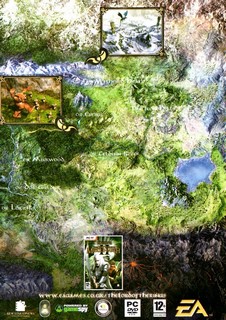


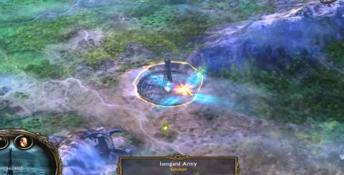
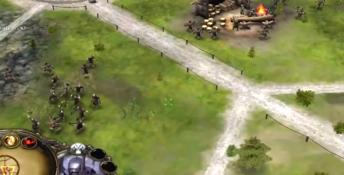
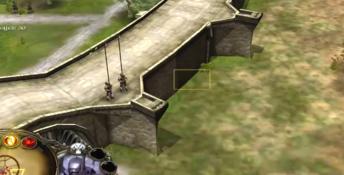

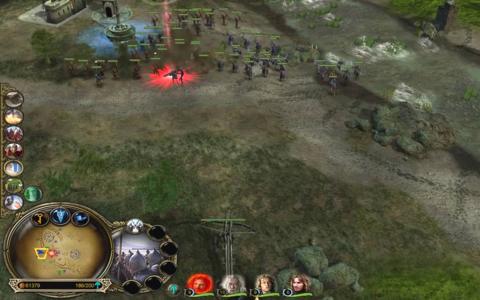
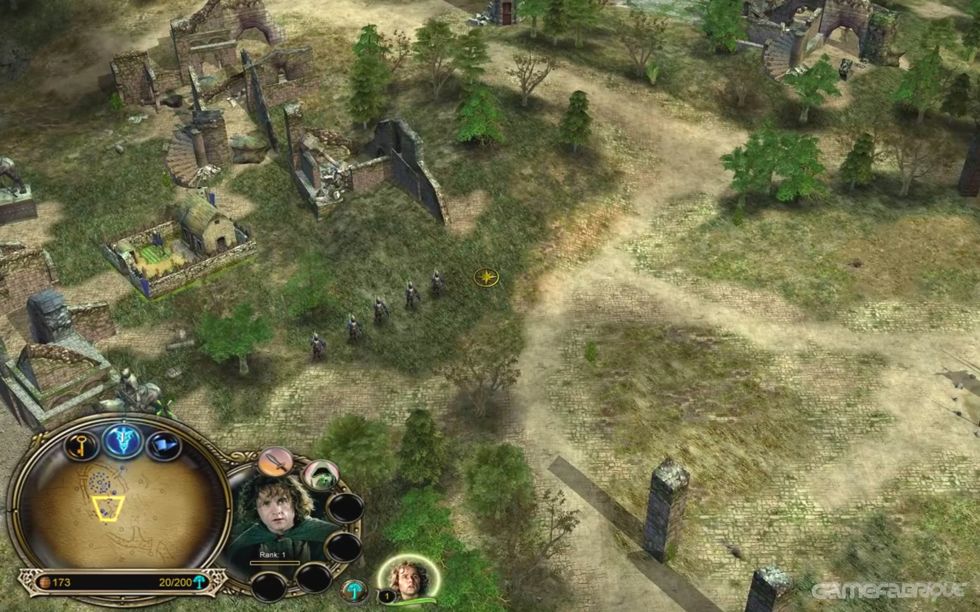
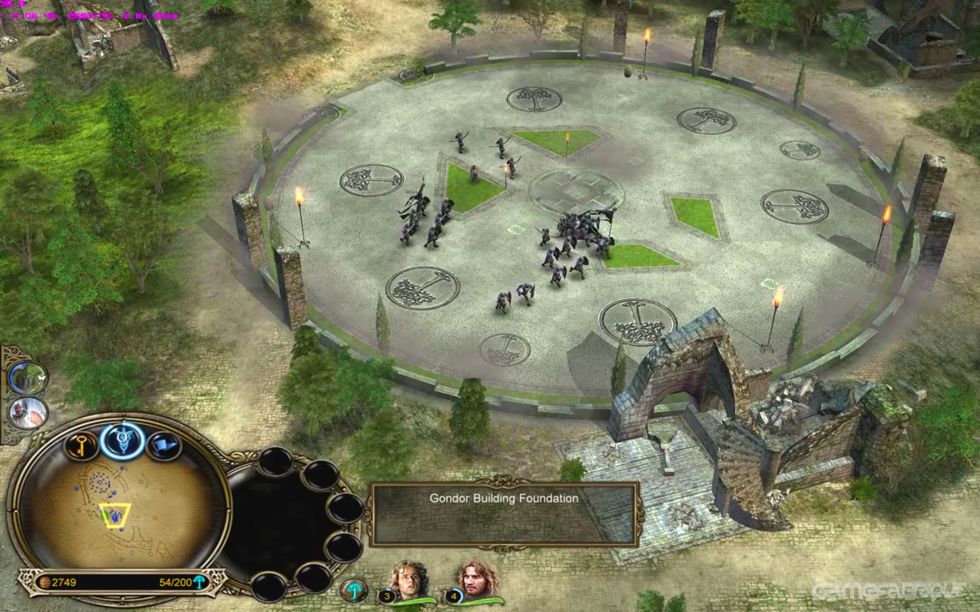



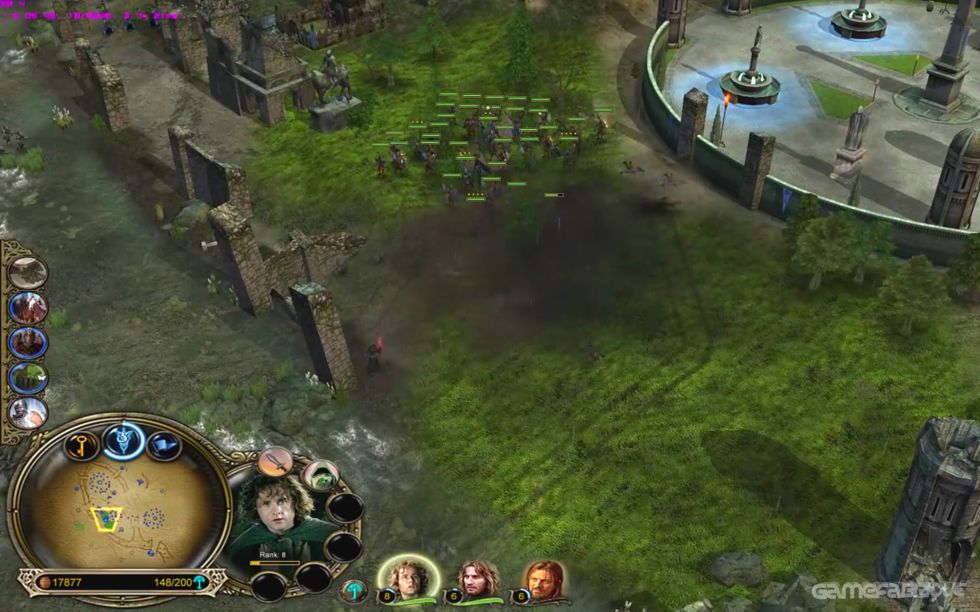
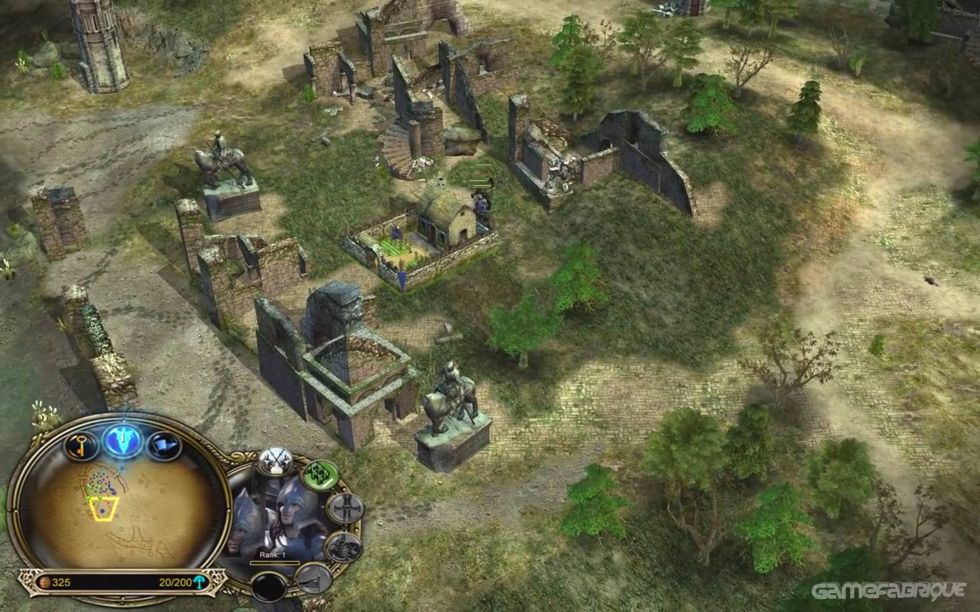
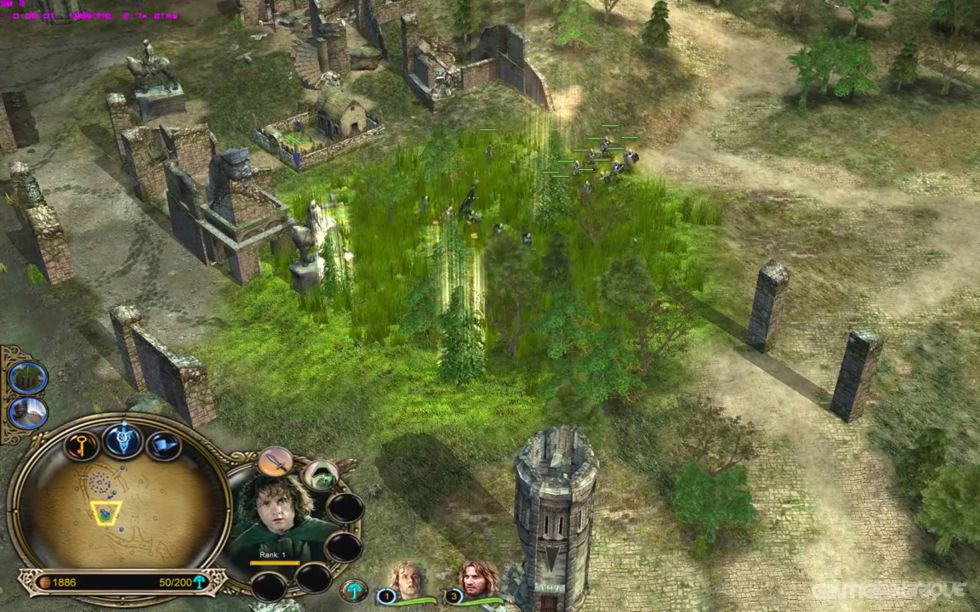

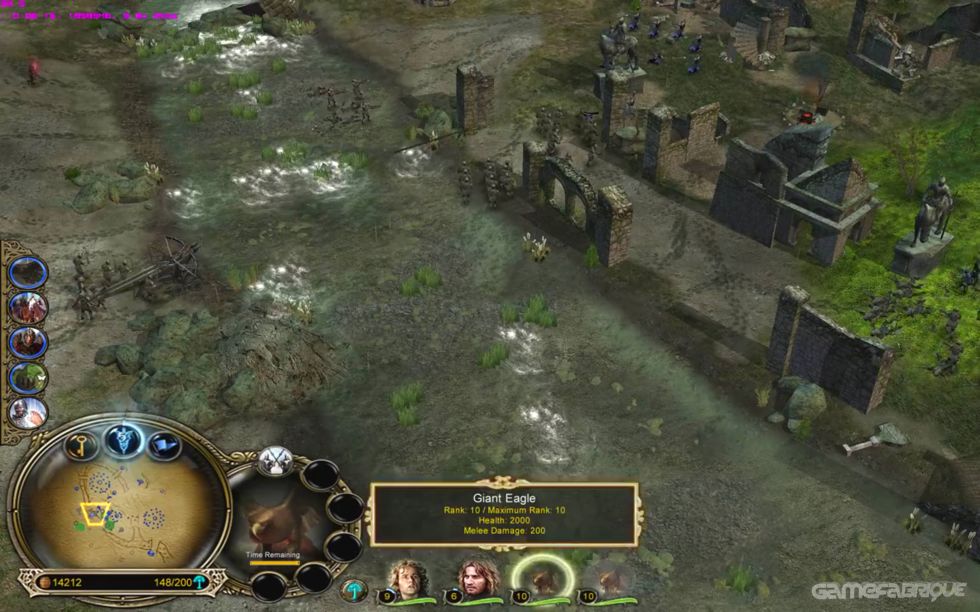



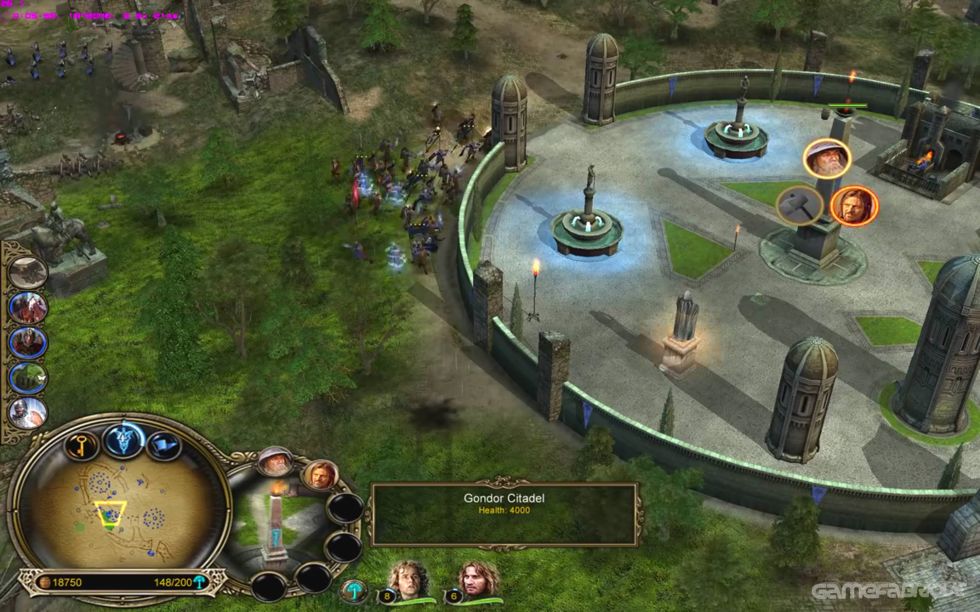
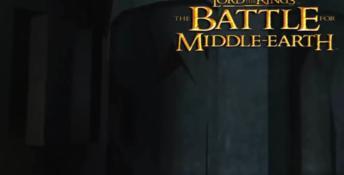
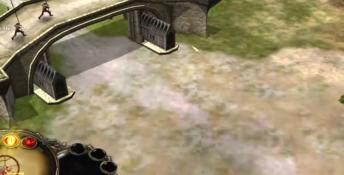
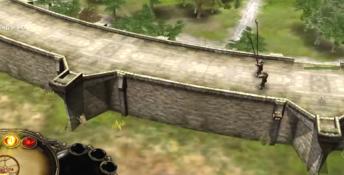
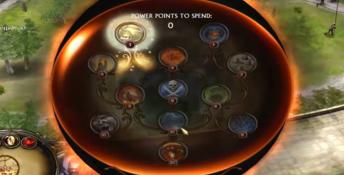


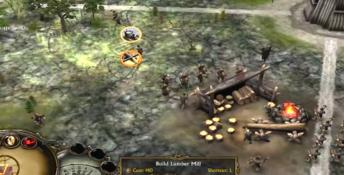

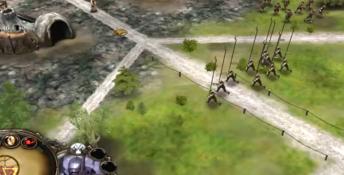
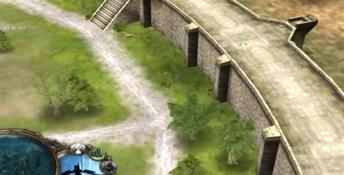
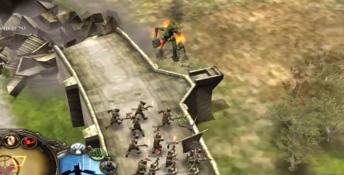
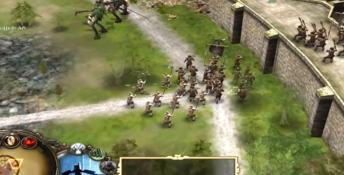

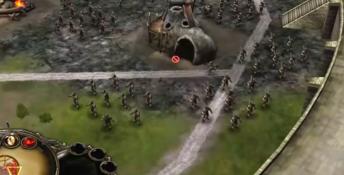
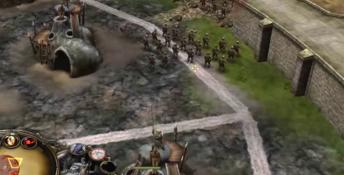
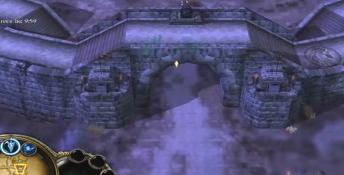
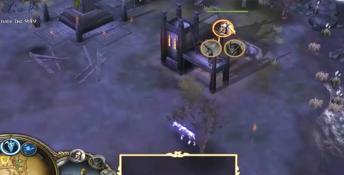
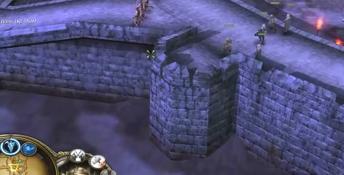

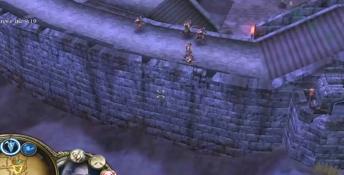
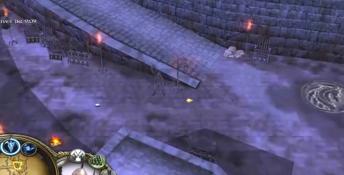


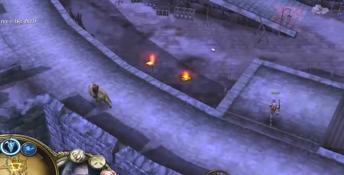
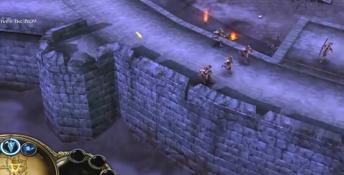
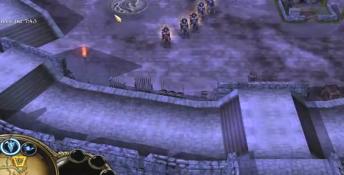
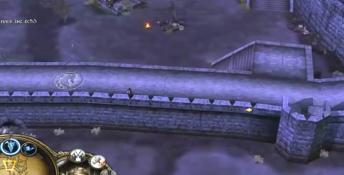
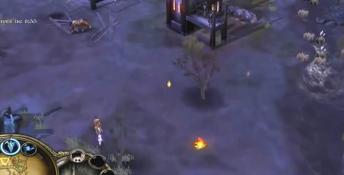
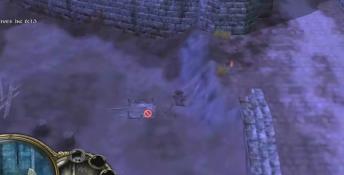
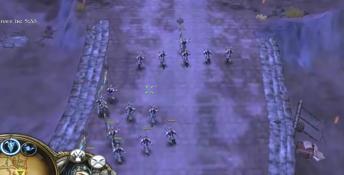
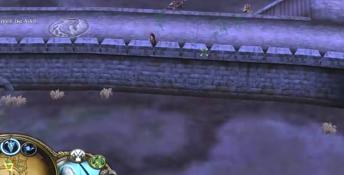
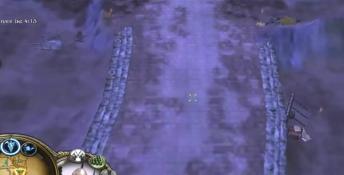


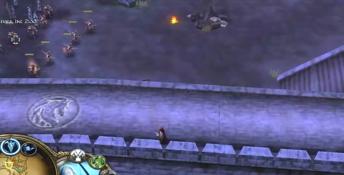
 Middle-earth: Shadow of Mordor
Middle-earth: Shadow of Mordor
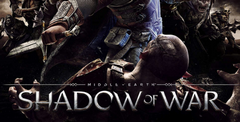 Middle-earth: Shadow of War
Middle-earth: Shadow of War
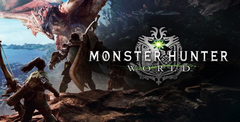 Monster Hunter: World
Monster Hunter: World
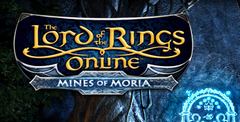 The Lord of the Rings Online: Mines of Moria
The Lord of the Rings Online: Mines of Moria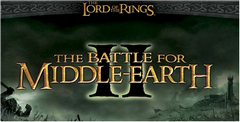 The Lord of The Rings: The Battle For Middle-Earth II
The Lord of The Rings: The Battle For Middle-Earth II
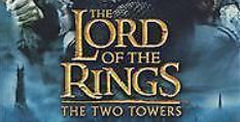 The Lord of the Rings: The Two Towers
The Lord of the Rings: The Two Towers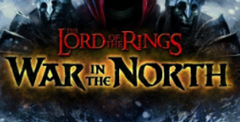 The Lord of the Rings: War in the North
The Lord of the Rings: War in the North